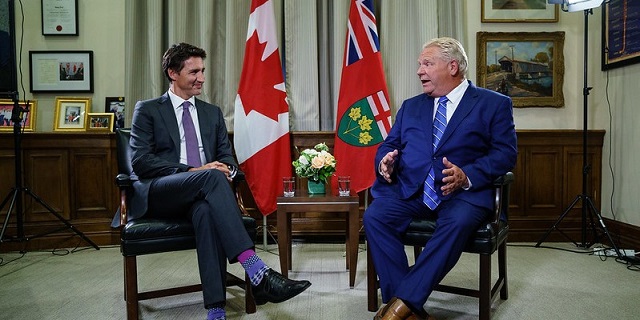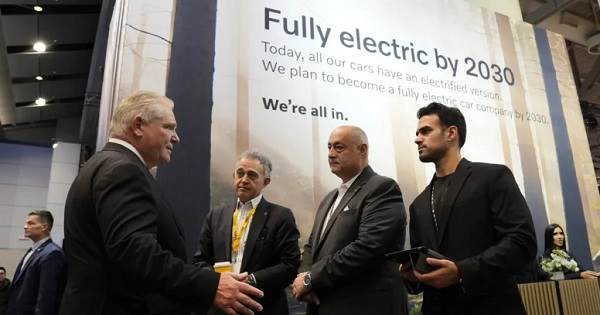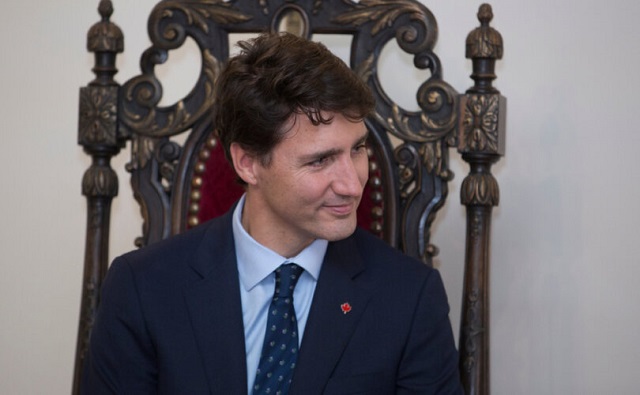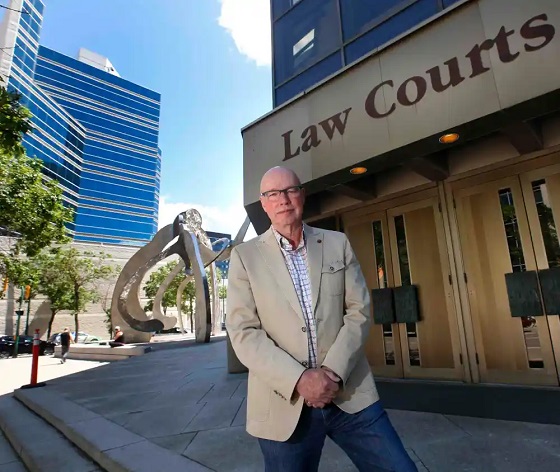Opinion
Reginald “Red” Deer wants to build a lemonade stand but is not sure where to put it.

Reginald “Red” Deer was enduring another hot pre-summer day in the backyard with his family and friends when he decided he would build a much needed lemonade stand, in his backyard.
The cost of the build would be $70 for plywood and nails. He decided that with a daily average of 4 people per day in his backyard each buying 1 glass of lemonade each day with a $0.25 profit he would make $10 before school starts.
Sounds like a no-brainer, right? His friend disagreed and suggested that if he moved the location to the front yard, spent $25 on a sign and some paint he do a lot better. Sure his family and friends may resist walking around the house to get a lemonade but there is 100 times more traffic in front and with all the neighbours and with the playground across the road, you should sell a lot more lemonade. Right?
The friend did not stop there, his vision grew even more. Lemonade is a great product on hot sunny days, what about the colder days? How about offering hot chocolate?
You could play it safe and spend $70 and build in your backyard, you could spend $25 more on advertising and exposure and do better or you could spend another $20 on a hot thermos and serve a wider audience on more days.
What do you think “Red” Deer should do?
By now you know I am talking about the Multi-use Aquatic Centre that the city is recommending building in the north-east corner of Red Deer in Timberlands.
I am suggesting you build the Aquatic Centre in the north west corner facing the QE2 near Hazlett Lake Park and incorporating the proposed “Dawe” ice rink, to draw in more traffic. It may cost more and take a little longer but this is a generational project, so what’s a few more months?
Or we could simply build the lemonade stand in the backyard.
The decision is ours. Just saying.
Business
Trump doubles tariffs on Canadian steel and aluminum imports

 MxM News
MxM News
Quick Hit:
President Trump announced Tuesday an additional 25% tariff on Canadian steel and aluminum imports, raising the total levy to 50%, in retaliation for Ontario’s decision to charge Americans in three border states 25% more for electricity.
Key Details:
-
Trump declared Ontario’s electricity surcharge on New York, Michigan, and Minnesota as an “abusive threat,” vowing to declare a National Emergency to counteract its impact.
-
The president threatened to impose a steep tariff on Canadian automobile imports by April 2nd if other longstanding trade disputes aren’t resolved, warning that it could “permanently shut down the automobile manufacturing business in Canada.”
-
Trump also called out Canada’s minimal contributions to military security, arguing that the U.S. subsidizes the country’s defense by more than $200 billion a year, saying, “This cannot continue.”
Diving Deeper:
President Trump took direct aim at Canada on Tuesday, unveiling an aggressive tariff hike on steel and aluminum imports from America’s northern neighbor. The move raises the current duty by an additional 25%, bringing the total to 50%, and follows Ontario Premier Doug Ford’s controversial decision to slap a 25% surcharge on electricity exports to U.S. border states.
Trump, in a post on Truth Social, blasted Ontario’s move as an “abusive threat” to American energy consumers and promised swift action. “I will shortly be declaring a National Emergency on Electricity within the threatened area,” Trump wrote, saying this would enable the U.S. to “quickly do what has to be done” to counteract Canada’s pricing.
But the trade battle didn’t stop there. Trump also called on Canada to eliminate tariffs of up to 390% on American dairy exports, a policy the president previously fought against during his first term. If Canada fails to act, Trump warned he would ramp up the pressure by imposing new tariffs on Canadian car exports, a move he said would effectively cripple the country’s auto industry.
“If other egregious, long-time Tariffs are not likewise dropped by Canada, I will substantially increase, on April 2nd, the Tariffs on Cars coming into the U.S., which will, essentially, permanently shut down the automobile manufacturing business in Canada,” Trump warned.
In addition to the latest tariffs, Trump took a broader swipe at Canada’s role in global security, reiterating a long-held grievance that the U.S. shoulders an unfair burden for its northern ally’s defense. “Canada pays very little for National Security, relying on the United States for military protection,” Trump wrote. “We are subsidizing Canada to the tune of more than 200 Billion Dollars a year. WHY??? This cannot continue.”
Trump then again floated annexing Canada into the United States to eliminate trade barriers and lower Canadian taxes. “The only thing that makes sense is for Canada to become our cherished Fifty-First State,” he wrote, claiming this would bring economic relief and greater security. “And your brilliant anthem, ‘O Canada,’ will continue to play, but now representing a GREAT and POWERFUL STATE within the greatest Nation that the World has ever seen!”
Business
Doug Ford needs to ditch the net-zero pipedreams

 Dan McTeague
Dan McTeague
Congratulations are in order for Doug Ford, newly re-elected in Ontario to his third consecutive majority government. As a proud Ontarian myself, I wish Premier Ford great success, which will ultimately be measured not by how many votes he’s won, but by the quality of the policies he implements and how well he responds to the challenges which arise on his watch.
Of course, the two are related. Bad policy can instigate a crisis. And bad policy in the midst of one often transforms a challenge into a catastrophe. Just one instructive example: Remember that in the wake of the Stock Market Crash of 1929, President Herbert Hoover signed into law the Smoot-Hawley Tariff, which, as John Robson recently observed on Twitter/X, helped turn “a painful short-term correction into an agonizing decade of misery.”
That is a moment in history our American friends would do well to remember just now. Though Donald Trump has been crowing about the economic benefits of tariffs for decades, the historical record tells a different story. And, more importantly for us, no matter how much damage Trump’s tariffs do to the American economy, they will be worse for Canada.
This is a moment in which our country is in desperate need of political leadership. That isn’t going to come from Ottawa, where the Trudeau Liberals and their accomplices in the NDP have shuttered parliament for months so that they can hold a coronation for their fellow Green Elitist, Mark Carney, who is all set to double-down on the disastrous net-zero policies of his predecessor.
So we are going to have to rely, at least in the near term, on our premiers to respond to this crisis. And so far very few of them – the notable exception being Danielle Smith – have shown the kind of ingenuity and resilience we need at this moment.
Ford himself has done everything he can to make himself the face of Canada’s response to the tariff threat. He’s made a great show of removing (already purchased) American-made products from LCBO.’s shelves, he has pledged to put a 25% export tax on energy, and he’s threatened to cut off Ontario’s energy exports to the United States entirely. In defense of the latter, Ford said, “They want to come at us hard, we’re going to come back twice as hard.”
That might sound impressive, but unfortunately Canada lacks the economic capacity to “come back twice as hard.” Years of mismanagement, on the federal, provincial, and even municipal levels, have left us in a terrible position to negotiate with the world’s largest economy. We have taken every opportunity to shoot ourselves in the foot, chasing foolish net-zero pipedreams which have succeeded only in squandering our capital, and smothering the oil and gas industry upon which our prosperity relies.
Justin Trudeau and his cronies deserve a lot of the blame for that, but the Ford government deserves its share as well. Ford long ago drank the net-zero kool-aid. He embraced the so-called “green energy transition” to such an extent that his government renamed its energy ministry the ‘Ministry of Energy and Electrification,’ a nod to the idea that we need to move away from fossil fuels and embrace electrically-powered everything. Neglecting to mention, of course, where that electricity is going to come from. (Hint: it’s not from expensive and inefficient wind and solar projects! Which, by the way, Ford has also invested heavily in.) And, relatedly, he’s stated that he will not be happy until Ontario achieves a 100% zero-carbon electricity grid, moving away from affordable and reliable natural gas as an energy source.
On top of that, Ford has gone “all in” on electric vehicles, teaming up with Trudeau to invest tens-of-billions of taxpayer dollars in a bid to attract EV manufacturing to his province. This investment wasn’t looking so hot before Trump’s election – remember when the Ford Motor Company scrapped their plan to build EVs at their plant in Oakville, Ont, due to “an unexpected slowdown” in demand for battery powered cars? And it has looked much worse since, once Trump got to work repealing the Biden administration’s de facto EV mandate.
Without that mandate, there will be a few hundred million fewer potential EV buyers in the world. People aren’t exactly lining up to buy EVs if they don’t have to. And though Trudeau’s 2035 EV mandate is still in place, even the Canadian market is softer than expected, especially after the federal program subsidizing the purchase of EVs – to the tune of $5,000 a piece – ran out of money and ended abruptly earlier this year.
But despite the changed environment, Ford doubled down on his commitment to EVs during the campaign. His platform read, “A re-elected PC government would continue to make these investments regardless of any decision by the U.S.,” and Ford continually reaffirmed his intention to continue to “invest in the sector.”
This is worse than rearranging the deck chairs on the Titanic. It’s closer to setting fire to the few lifeboats the ship actually has.
Ontario’s voters have once again entrusted our province to Doug Ford. But if he doesn’t start taking this crisis seriously – by shoring up the province’s financial situation and increasing our competitiveness by changing course on EVs and kicking net-zero to the curb – he won’t be remembered as the first premier to win three consecutive majorities in over 60 years. Instead he’ll be remembered as the guy who took Ontario past the point of no return.
Dan McTeague is the president of Canadians for Affordable Energy and a former Liberal member of Parliament.
-

 National2 days ago
National2 days agoTrudeau fills Canadian courts with Liberal-appointed judges before resigning as prime minister
-

 Censorship Industrial Complex2 days ago
Censorship Industrial Complex2 days agoMisinformed: Hyped heat deaths and ignored cold deaths
-

 Banks2 days ago
Banks2 days ago“Trade-Based Money Laundering IS THE FENTANYL CRISIS”: Sources expose Chinese-Mexican-Canadian Crime Convergence
-

 Crime2 days ago
Crime2 days agoReporter Exposes The Left’s $20 Billion Climate Slush Fund
-

 Business2 days ago
Business2 days agoTrump’s trade war and what it means for Canada
-

 Business2 days ago
Business2 days agoNext federal government has to unravel mess created by 10 years of Trudeau policies
-

 Addictions2 days ago
Addictions2 days agoFuelling addiction – The “safe supply” disaster
-

 COVID-192 days ago
COVID-192 days agoCovid Response at Five Years: Conclusion




